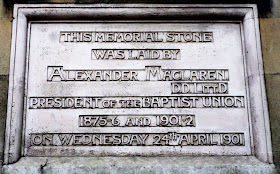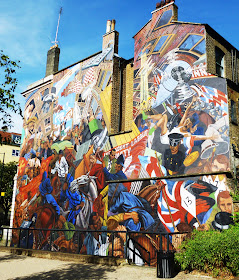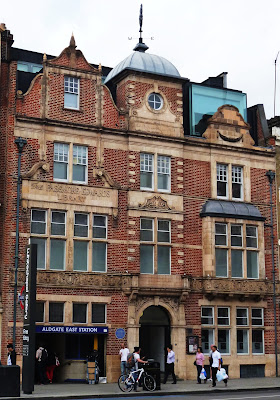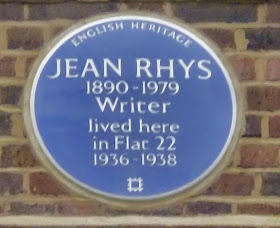Lettre morte, which translates as 'Dead Letter', is a powerful book written in a single paragraph by a narrator whose Vietnamese father has just died. There are a number of parallels with Linda Lê herself, such as her mother leaving Vietnam for France with her daughters while her husband remained in Vietnam, the death of her father, the importance of the letters he wrote to her, etc.
The narrative is written to her friend Sirius, about whom we learn almost nothing: the important characters are the narrator's father and her lover Morgue (a word which also signifies pride), and the unnamed narrator herself.
The writing on the back cover, taken from the beginning of the book, is worth quoting:
'Les morts ne nous lâchent pas, dis-je à mon ami Sirius en rangeant les lettres de mon père dans un tiroir. C'est le supplice de Mézence que j'endure, attachée à un mort, main contre main, bouche contre bouche, dans un triste embrassement. Les lettres ont cessé d'arriver du pays de mon enfance. Celui qui les écrivait est mort d'une mort solitaire et enterré au bord d'un cours d'eau. Mais il est là, sa peau touche ma peau, mon haleine donne vie à ses lèvres. Il est là, dis-je à Sirius, quand je te parle, quand je mange, quand je dors, quand je me promène. Il me semble que je suis morte, tandis que mon père, ce mort qui ne me laisse pas en paix, déborde de vie. Il me possède, me suce le sang, me ronge les os, se nourrit de mes pensées.'
My translation:
'"The dead don't let us go", I told my friend Sirius while putting my father's letters into a drawer. "I'm going through the torment of Mezentius, tied to a dead man, hand to hand, mouth to mouth, in a painful embrace.* The letters stopped coming from my childhood home. The man who wrote them died a lonely death and is buried by a river. But he's here, his skin touching my skin, his breath giving life to my lips." I told Sirius: "He is there when I speak to you, when I eat, when I sleep, when I go for a walk. I feel dead, whereas my father, this dead man who will not leave me in peace, is brimming with life. He owns me, sucks my blood, eats into my bones, feeds on my thoughts."'
The narrator has intense feelings of guilt for not replying to her father's letters, for not going to see her father before he died. She describes her life with him, how her mother came to hate him, how he turned to drink, and how she used to fetch him alcohol as a child. Madness was around her, particularly from her uncle (her mother's brother) who frequently used to stay with the family before being sent to a psychiatric hospital, where he has periods of sanity and looks after the hospital library and goes around town on a moped. With the family, he used to sit on a car outside and bless people, and used to piss in bottles that he kept in the fridge and called it holy water.
In France the narrator has been in a destructive relationship (which she very recently terminated) with the married Morgue, who treated her very badly, but to whom she has been tied by an odd bond: he is abusive, a complete Philistine, and yet she has been unable to sever her relationship with him, which can perhaps only be understood in terms of her urge towards self-destruction.
Finally, after unremitting psychological pain and self-torture, the narrator decides to leave her flat and its terrible memories of Morgue, and tells Sirius to open the window and let the coolness of dawn enter.
*Mezentius is a king in Roman mythology who is particularly noted for his cruelty. Virgil's Aeneid mentions his method of torture: permanently tying a dead body to a person, which was, as Virgil called it: 'a slow death in a horrifying embrace'. The expression 'le supplice de Mézence' is evidently much more common than the English 'torment of Mezentius', and that appears to be the only English translation for it.
Below are links to other books of Lê's that I've reviewed:
–––––––––––––––––––––––––––––––––––
Linda Lê: Les Évangiles du crime (1992)
Linda Lê: Voix: une crise (1998)
The narrative is written to her friend Sirius, about whom we learn almost nothing: the important characters are the narrator's father and her lover Morgue (a word which also signifies pride), and the unnamed narrator herself.
The writing on the back cover, taken from the beginning of the book, is worth quoting:
'Les morts ne nous lâchent pas, dis-je à mon ami Sirius en rangeant les lettres de mon père dans un tiroir. C'est le supplice de Mézence que j'endure, attachée à un mort, main contre main, bouche contre bouche, dans un triste embrassement. Les lettres ont cessé d'arriver du pays de mon enfance. Celui qui les écrivait est mort d'une mort solitaire et enterré au bord d'un cours d'eau. Mais il est là, sa peau touche ma peau, mon haleine donne vie à ses lèvres. Il est là, dis-je à Sirius, quand je te parle, quand je mange, quand je dors, quand je me promène. Il me semble que je suis morte, tandis que mon père, ce mort qui ne me laisse pas en paix, déborde de vie. Il me possède, me suce le sang, me ronge les os, se nourrit de mes pensées.'
My translation:
'"The dead don't let us go", I told my friend Sirius while putting my father's letters into a drawer. "I'm going through the torment of Mezentius, tied to a dead man, hand to hand, mouth to mouth, in a painful embrace.* The letters stopped coming from my childhood home. The man who wrote them died a lonely death and is buried by a river. But he's here, his skin touching my skin, his breath giving life to my lips." I told Sirius: "He is there when I speak to you, when I eat, when I sleep, when I go for a walk. I feel dead, whereas my father, this dead man who will not leave me in peace, is brimming with life. He owns me, sucks my blood, eats into my bones, feeds on my thoughts."'
The narrator has intense feelings of guilt for not replying to her father's letters, for not going to see her father before he died. She describes her life with him, how her mother came to hate him, how he turned to drink, and how she used to fetch him alcohol as a child. Madness was around her, particularly from her uncle (her mother's brother) who frequently used to stay with the family before being sent to a psychiatric hospital, where he has periods of sanity and looks after the hospital library and goes around town on a moped. With the family, he used to sit on a car outside and bless people, and used to piss in bottles that he kept in the fridge and called it holy water.
In France the narrator has been in a destructive relationship (which she very recently terminated) with the married Morgue, who treated her very badly, but to whom she has been tied by an odd bond: he is abusive, a complete Philistine, and yet she has been unable to sever her relationship with him, which can perhaps only be understood in terms of her urge towards self-destruction.
Finally, after unremitting psychological pain and self-torture, the narrator decides to leave her flat and its terrible memories of Morgue, and tells Sirius to open the window and let the coolness of dawn enter.
*Mezentius is a king in Roman mythology who is particularly noted for his cruelty. Virgil's Aeneid mentions his method of torture: permanently tying a dead body to a person, which was, as Virgil called it: 'a slow death in a horrifying embrace'. The expression 'le supplice de Mézence' is evidently much more common than the English 'torment of Mezentius', and that appears to be the only English translation for it.
Below are links to other books of Lê's that I've reviewed:
–––––––––––––––––––––––––––––––––––
Linda Lê: Les Évangiles du crime (1992)
Linda Lê: Voix: une crise (1998)
Linda Lê: Lettre morte






































































